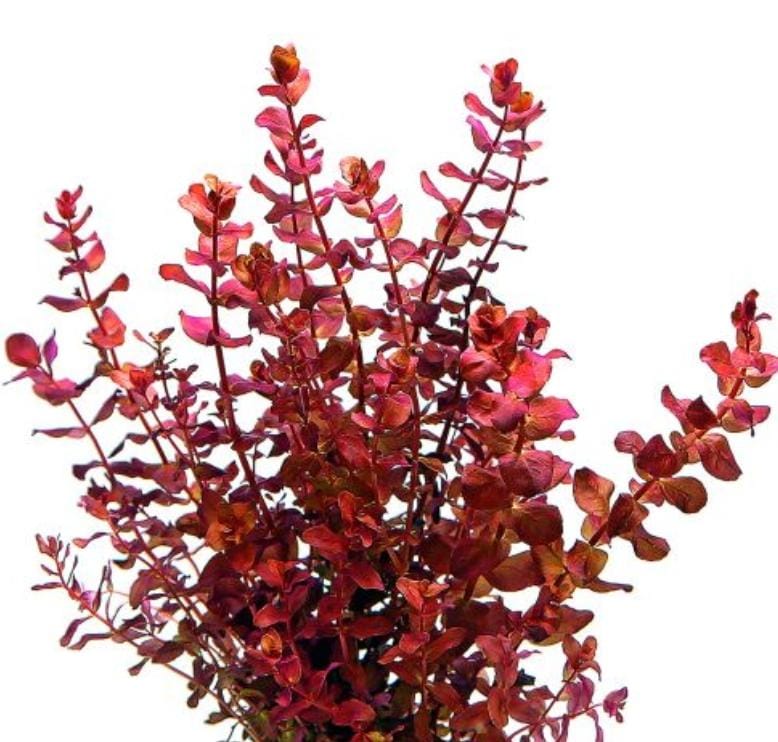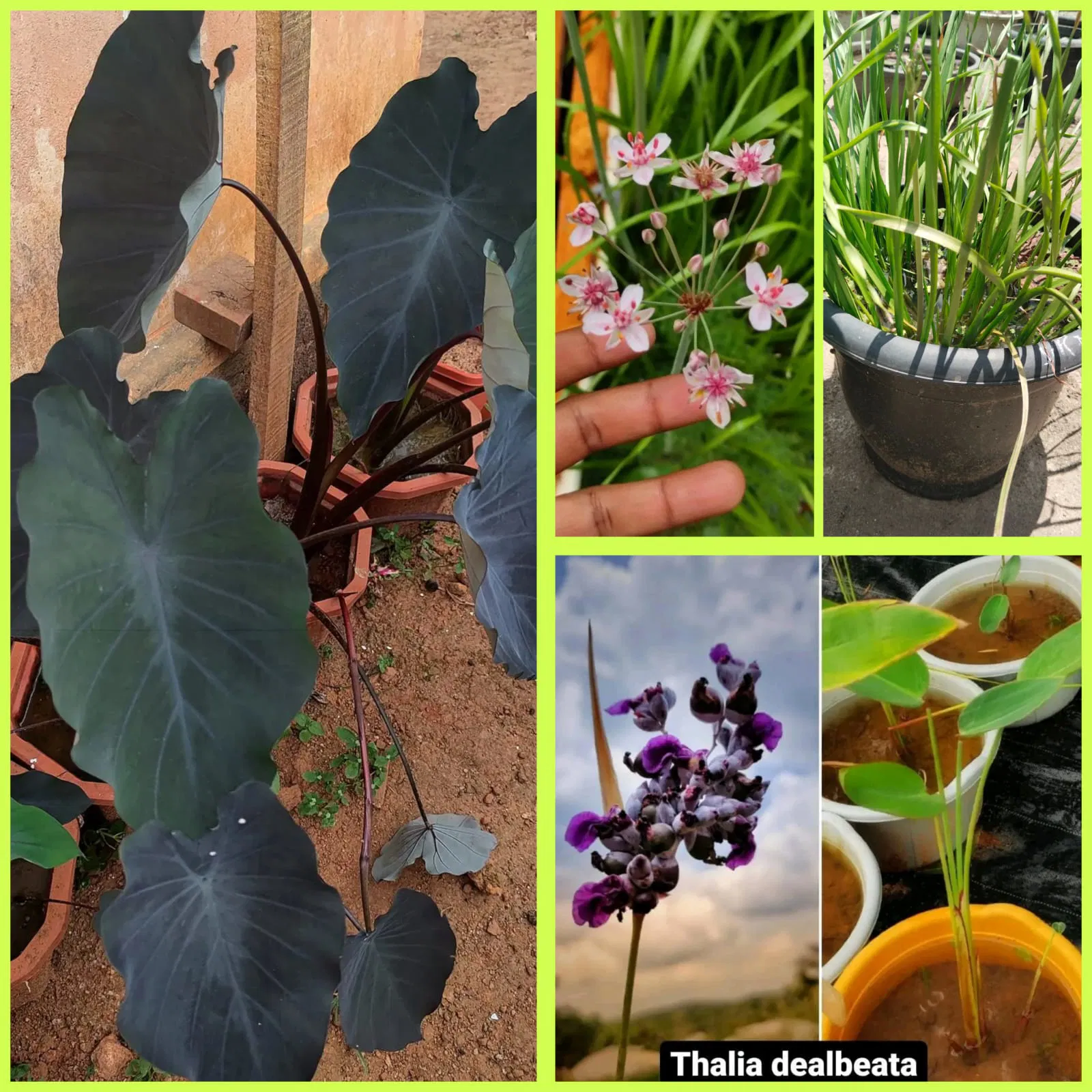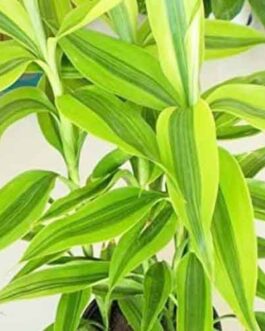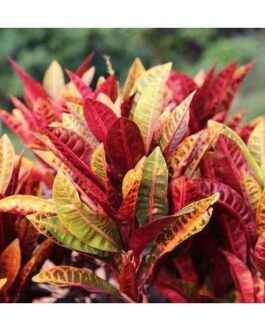Colocasia ‘Black Magic’ is a stunning tropical plant known for its large, dramatic, heart-shaped leaves that are deep purple to black in color. It’s a variety of Colocasia esculenta, commonly referred to as elephant ear due to the size and shape of its leaves.
Key Features:
- Size: Grows up to 3-6 feet (1-2 meters) tall.
- Foliage: Velvety, dark purple-black leaves that add a bold, tropical aesthetic.
- Sunlight: Prefers partial shade to full sun, though the darkest color appears in full sun.
- Water: Thrives in consistently moist to wet soil, making it ideal for pond edges or water gardens.
- Hardiness: Typically grown as an annual in cooler climates, but it’s perennial in USDA Zones 8-11.
It’s a popular choice for adding dramatic flair to gardens, containers, or water features.
Thalia dealbelta, commonly known as powdery thalia, hardy canna, or water canna, is a striking aquatic perennial native to wetlands in the southern United States and Mexico. It is often used in water gardens or ponds due to its tall stature (reaching 3 to 6 feet), attractive bluish-green foliage, and vibrant purple flowers that bloom from late spring to early autumn
This plant thrives in full sun and wet, loamy soils and can even tolerate being submerged up to 18 inches. It’s a hardy species, ideal for USDA zones 6 to 10, and serves as a food source for wildlife like ducks and butterflies. Additionally, it contributes to water purification by removing pollutants from standing water
Despite its hardiness, it requires some maintenance due to its rapid growth and spreading rhizomes, which can be controlled by planting in containers
Butomus umbellatus, commonly known as flowering rush, is a perennial aquatic plant that thrives in wetlands, ponds, and slow-moving water bodies. Native to Europe and Asia, it has also spread to parts of North America, where it can sometimes become invasive.
Key Characteristics:
- Height: It typically grows to about 3-5 feet tall.
- Flowers: The plant produces striking pink to white flowers in umbrella-like clusters (umbels) from late spring to summer.
- Leaves: It has long, narrow, grass-like leaves that can grow submerged or above water.
- Habitat: Butomus umbellatus prefers shallow water or muddy banks and can tolerate both standing and slow-flowing water environments.
Environmental Impact:
In North America, it is considered an invasive species in some regions, where it can outcompete native vegetation in wetlands and disrupt local ecosystems
Apart from its aesthetic appeal in water gardens, the plant has limited use in traditional medicine and is sometimes planted to stabilize water edges
It can be propagated by seeds or rhizomes and grows best in full sunlight.







Reviews
There are no reviews yet.